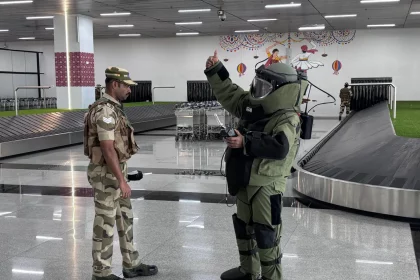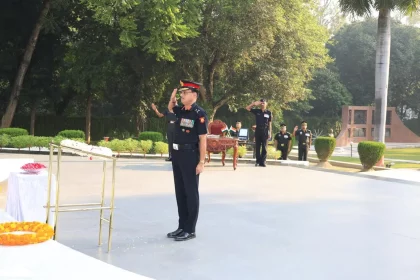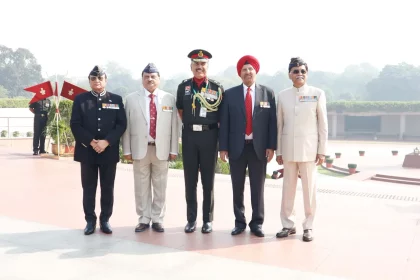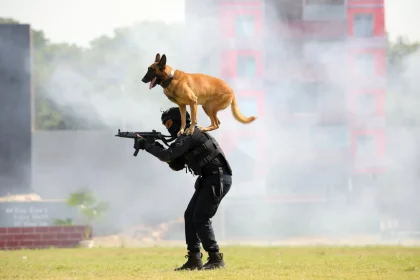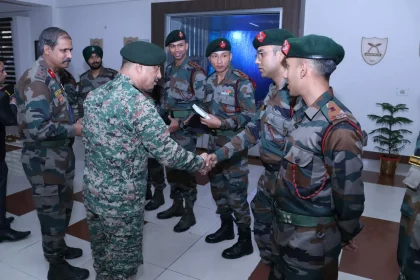Bomb-Threat Mock Exercise Successfully Conducted at Surat Airport
Inter-agency drill at Surat Airport enhances emergency preparedness, coordination, and response capabilities against potential bomb threats.
Rear Admiral Manoj Jha Assumes Charge as Chief Staff Officer (Operations), Eastern Naval Command
An accomplished Gunnery Specialist and seasoned naval leader, Rear Admiral Manoj Jha takes over as Chief Staff Officer (Operations) to…
83rd EME Corps Day: Maj Gen Suresh S Leads Tributes at Smritika War Memorial, Lucknow
Celebrating 83 years of innovation, precision, and service — the Corps of EME continues to power the Indian Army’s technological…
EME Corps Day: Lt Gen Rajiv Kumar Sahni Leads Wreath-Laying Ceremony at National War Memorial
Honouring the indomitable spirit and technical excellence of the Corps of Electronics and Mechanical Engineers on their Corps Day at…
NSG Marks 41st Raising Day with Operational Demonstrations and Key Announcements
The force remains a cornerstone of India's internal defence architecture, poised to safeguard the republic's sovereignty for decades to come.
Assam Rifles Conducts Orientation Programme for Newly Posted Officers at HQ DGAR Shillong
DG Assam Rifles Lt Gen Vikas Lakhera Motivates Officers to Uphold the Force’s Proud Traditions and Values.

